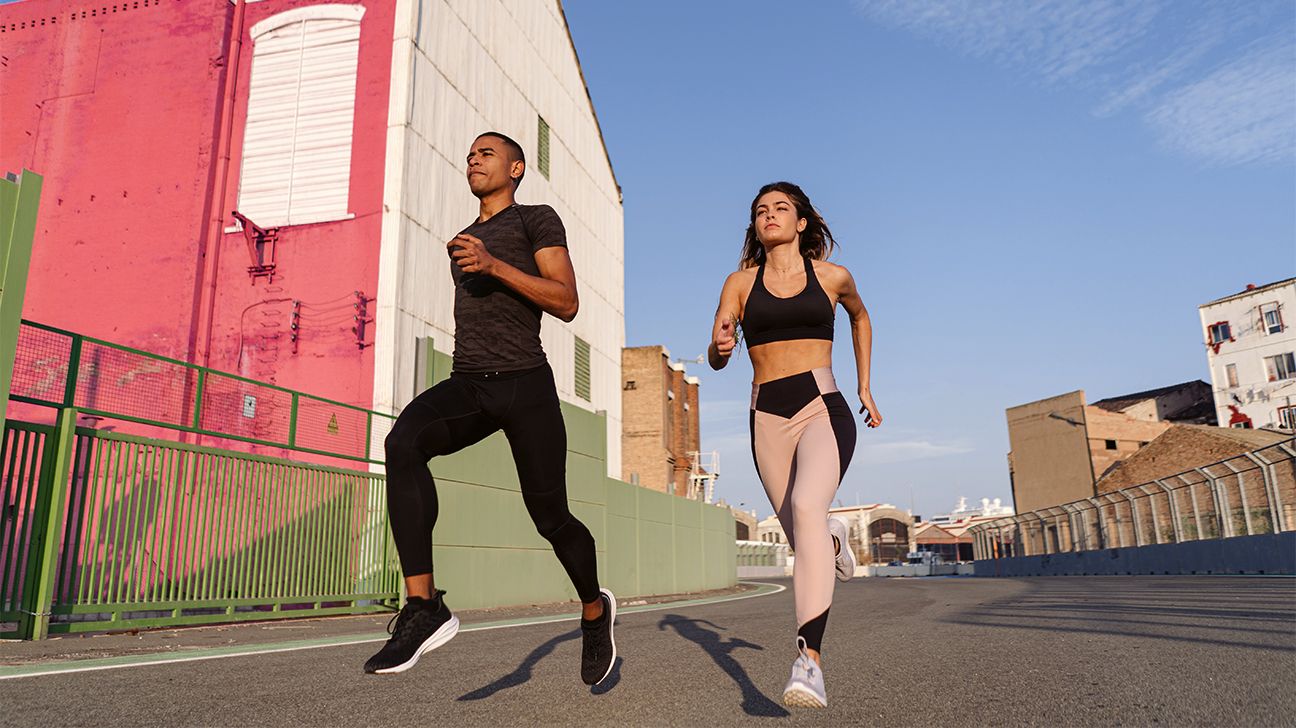Prepping your muscles properly is worth the extra few minutes before a lifting session. Not only are you preventing short-term injury, but your promoting healthier long-term muscle growth.
If you’re thinking of jumping into a weightlifting session like you’re tearing into a candy bar, put that thought down before you hurt yourself.
Weightlifting and resistance training can (and should) be an integral part of your regular training. BUT (and it’s a big ol’ ba-donk-a-donk B-U-T) you need to warm up your muscles first.
Your warmup preps your body for the load to come, including getting your joints and connective tissues in tip-top shape. You also need to have enough range of motion (ROM) and flexibility for the best lifting form. This helps keep the not-so-fun things like injuries away.
Read on for more pre-lift prep tips.
Keep in mind that your warmup should be specific to the lifts you do. You don’t want to do the same warmup on leg day as on arm day. You also want to throw in a little cardio.
Here are some go-to moves to add to your rotation:
1. 5–10 minutes of cardio
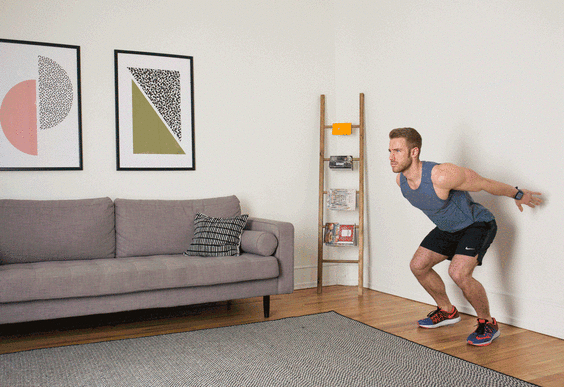
Choose a form of cardio that’s similar to the type of lifts you’ll be doing. For example, if you’ll be working your arms, a rowing machine or elliptical that gets your arms moving while warming up your entire body is a good option.
For your lower body, running, climbing stairs, or cycling will activate and warm your muscles before you put them to work. The 5- to 10-minute threshold is just enough time to get your heart going at a sustained rate before you do dynamic and static stretches.
This shouldn’t be high intensity cardio, by the way. You should still be able to talk, but you might breathe more heavily.
2. Bodyweight squat
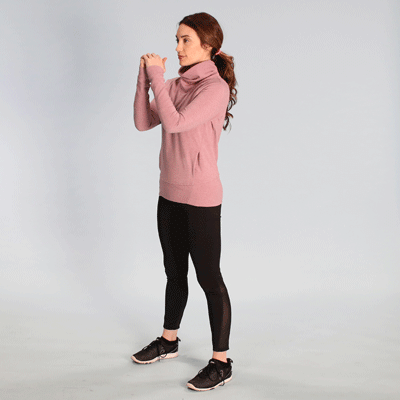
Squats activate a whole range of muscle groups, from your glutes and hamstrings to your quads and hip flexors. They also warm up your lower back and core.
How to do it:
- Stand with feet hip-width apart and toes pointing forward.
- Squat down, pressing through your heels, like you’re sitting in a chair. If you’re doing box squats, stop once your hip and knee joint reach the same level. However, if you’re doing full squats, keep going to a full squat position with hips below knees.
- Return to the starting position, squeezing your glutes at the top of the squat.
Do 3 sets of 10 reps or perform squats for 45–60 seconds.
Pro tip: Some people are more comfortable with their feet slightly wider or narrower than hip width and/or with their toes pointed slightly outward. The need for those slight changes is often due to the biomechanics of your hip joint. Listen to your body and adjust your stance so it feels comfortable.
3. Jumping jack
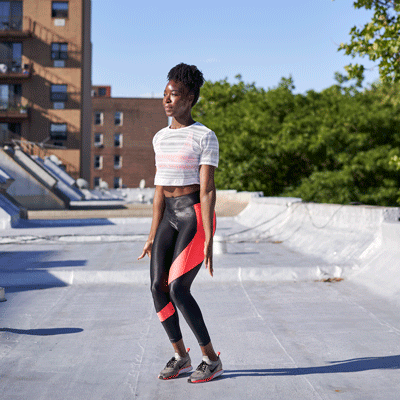
Jumping jacks activate your upper body, including your deltoids, latissimus dorsi, trapezius, pectorals, biceps, and triceps. They also activate your lower body, from your calves and Achilles tendons to your quads and glutes.
How to do it:
- Stand with feet together and arms at your sides.
- Jump your feet out wider than hip width while raising your arms overhead. If you want, you can clap your hands at the top.
- Jump back to the starting position and repeat.
Perform jumping jacks for 30–60 seconds.
Pro tip: If jumping jacks are too high impact, you can do this move without jumping. Step one leg out to the side while raising both arms over your head, then return to the starting position. On the next rep, step out with the opposite leg.
4. Arm circle
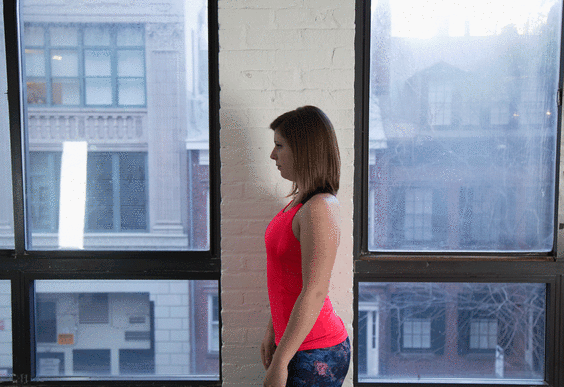
Arm circles are a dynamic stretch in that they take your arms through the full ROM using muscle and momentum. Arm circles are an excellent warmup before a session devoted to upper-body lifts.
How to do it:
- Stand with feet together and hands at your sides.
- Lift arms forward toward your shoulders, then circle them around behind your shoulders as far as you can and bring them back to the starting position.
- Create a continuous circle, and perform this motion for 30 seconds.
- Change the direction of your arm circles and continue for another 30 seconds to complete 1 set.
Pro tip: Increase the tempo of your arm circles to move this dynamic stretch into cardio territory.
5. Leg swing — front to back and side to side
Leg swings dynamically warm up your hip flexors, abductors, and adductors. They’re an important warmup for leg day and for any time you’re working on power or explosive moves.
Front to back:
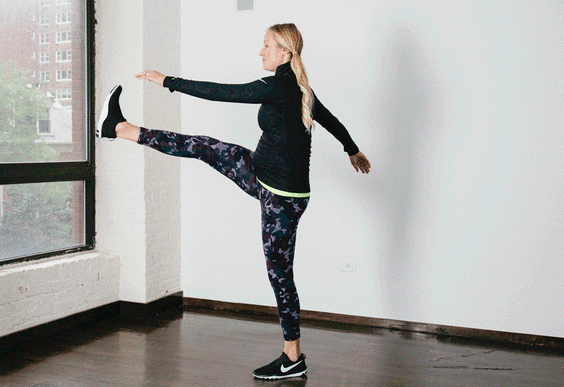
- Stand with a stable object or surface at your side to hold on to for stability if you need it. Your feet should be directly in line with your knees and hips.
- Swing your opposite leg (the leg on the side that’s not next to the stability object) in front of your body. You don’t have to swing as high as you can, but you should feel a slight stretch in your hamstring.
- Maintaining momentum, swing your leg behind your body without arching your back.
- Use your momentum to continue swinging your leg from front to back.
- Repeat on this side for 30 seconds.
- Switch sides, making sure the stability surface or object is on the opposite side from the leg that will be swinging.
- Repeat for 30 seconds, as you did on the first side.
Side to side:
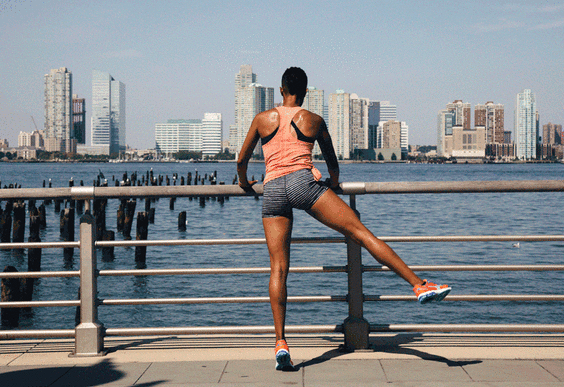
- Face a stable object or surface to hold on to for stability.
- Swing your right leg to the left, crossing it in front of your left leg.
- Using momentum and your muscles, swing it to the right side of your body. (Your leg should look like a pendulum.)
- Try to hold your upper body still and keep your core engaged.
- Swing your right leg for 30 seconds.
- Repeat with your left leg for another 30 seconds.
6. Calf stretch
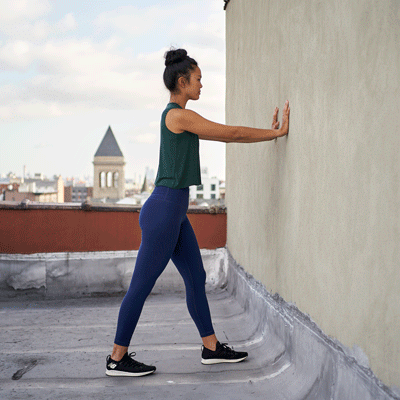
Tight calves and Achilles tendons can seriously limit the ROM of your ankles. This can get in the way of everything from squats to deadlifts. Standing calf stretches can pay dividends when it comes to your form and ROM.
How to do it:
- Stand facing a wall or sturdy object.
- Place both hands on the wall and step one foot in front of the other. Keep each foot in line with the hip and knee.
- Press into your back foot. Try to keep your heel on the ground. You should feel a stretch to the back of your calf.
- Hold the stretch for 30 seconds.
- Now, slightly bend your back knee. You should feel stretching near the upper (and inner) portion of your calf.
- Hold this stretch for 30 seconds.
- Repeat both stretches on the other side.
7. Single-arm cross-body stretch
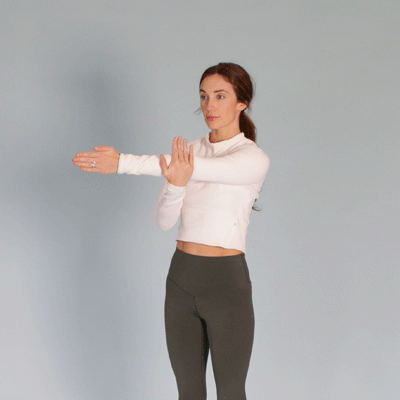
This static stretch targets your deltoids, trapezius, and rhomboids.
How to do it:
- Stand with feet hip-width apart.
- Keep your right arm straight as you cross it in front of your body, with your hand passing in front of your left shoulder.
- Use left arm to gently press just above right elbow to deepen the stretch.
- Hold the stretch for 30 seconds.
- Repeat on the other side.
Pro tip: Do not grasp the arm that’s being stretched at or below your elbow. That puts too much pressure and strain on the elbow joint.
8. Hamstring stretch
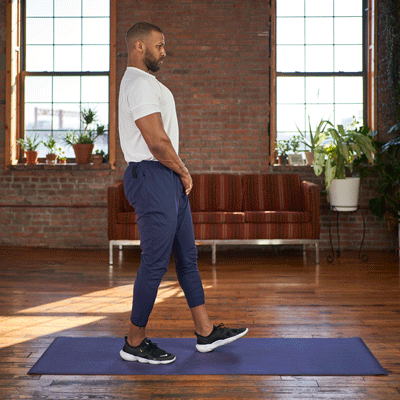
Your hamstrings are used in all kinds of lifts, from lunges to deadlifts. Muscle imbalances between the hamstrings and quads are common, but these two muscle groups balance each other out.
Lifts that target your hamstrings are an excellent way to maintain muscle balance. But prep those hammies first!
How to do it:
- Standing with feet hip-width apart, bring one foot forward, with toes pointing up.
- Bend at your hips, keeping front leg straight and core engaged.
- Try to reach your toes while bringing your torso toward front thigh. It’s OK if you can only reach your knee or shin.
- Hold the stretch for 30 seconds.
- Repeat on the other side.
9. Standing forward bend with rear arm lock
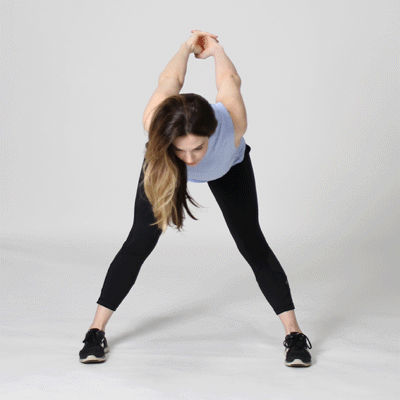
If you’ve ever watched Michael Phelps warm up before a race, you’ve seen an awesome demonstration of this dynamic stretch. It’s actually a standing forward bend stretch with a rear arm lock and his signature giant-wingspan arm slaps thrown in for good measure.
This dynamic stretch activates your pectorals, deltoids, rhomboids, and trapezius.
How to do it:
- Stand with feet hip-width apart or slightly wider.
- Interlace your fingers behind you and bend forward at your waist.
- Keeping arms locked at the elbows, engage your shoulders and upper back muscles.
- Hold for 10–15 seconds. (Add the arm slap if you want.)
Pro tip: If you have trouble keeping your fingers together during the stretch or you experience pain, try it without bending forward.
Why to exercise before lifting
- A 2021 study found that exercising (warming up) before lifting can enhance muscular development and growth.
- Warming up increases blood flow, prepares your muscles to work, enhances flexibility, and improves ROM.
- Exercising before lifting can prevent pulls and tears by loosening and preparing your muscles.
The pre-lift warmup sweet spot tends to be around 20 minutes, but it depends on the intensity of the pre-workout and the intensity of your weightlifting session.
You may only need 10–15 minutes of warmup if it’s high intensity. However, if you keep things at an easy pace, it could take 15–20 minutes for your muscles to really loosen up and get ready to perform.
BTW, there’s some controversy about whether static stretches are beneficial to weightlifting. Keep in mind that there’s a difference between flexibility, which refers to ROM, and laxity in the joints, which is when the joint does not have enough tension and therefore causes extreme ROM.
Extreme inflexibility and extreme flexibility both increase the risk of injury. It’s safer to prepare your body for weightlifting than to lift with cold muscles, which can get pulled or tear.
If you’re an absolute newbie, a session or two with a personal trainer can help you learn the basics so you don’t injure yourself. They can show you stretches and recommend a warmup that’s tailored to your weightlifting goals and routines.
If you’re trying to maximize muscle mass, it’s a good idea to consult a pro so that you 1) develop good form and 2) support your lifting goals with your warmup, nutrition, and non-weightlifting workouts.
After an injury is also a good time to consult a pro such as a physical therapist. They can recommend stretches and exercises to help you get back into performance shape without causing further injury.
- Set aside 15–20 minutes to warm up before EVERY weightlifting session.
- Start with 5–10 minutes of light cardio that mimics the movements used in your weightlifting workout.
- Do a mix of dynamic and static stretches to protect your muscles and maximize muscle gain.
Don’t forget to have fun!

